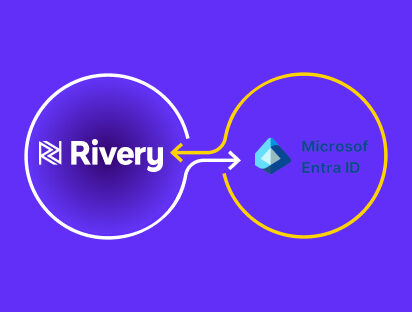The process (or the art) of successfully implementing new processes across large teams and global enterprise companies is something people don’t speak about often enough.
Especially when it comes to technology vendors, the standard answer to any questions on this subject at virtually any pitch will be:
“Not a problem! Our solution is intuitive. It doesn’t require setup or training and you’ll be up and running from the get go. You’ll be able to seamlessly integrate our product to all your existing processes and everyone in your company will have embraced it overnight.”
Anyone that has worked in large, matrix-structured multinational corporations is well aware that this is just not feasible. You might be able to implement a new process overnight in an SMB or a startup of under 200 people.
However, it’d be ridiculous to suggest that rolling out a new product, platform, or process across a large enterprise doesn’t require making a plan to train staff and rollout across an entire company.
In a way, it can be irritating for potential enterprise customers that are prospecting multiple solutions from startup vendors to repeatedly see a lack of awareness and knowledge from Sales teams about the intricacies of the procurement and internal processes their clients, which must be adhered to.
Just like when startups or product ideas fail due to poor execution and planning, so does rolling out new solutions, processes and technologies in a large corporation.
If the end users don’t fully understand or get value from them, they are bound to fail.
1. Start with a Small Pilot
We recommend our customers to start small.
It’s important to test and try new technologies in controlled environments. No matter how attractive or useful a tool or platform might seem, it is always a good idea to test it. If everything goes smoothly from the get go, you know that it will be simpler to roll out across an organization successfully.
If there are multiple issues and hiccups along the way, or it doesn’t meet your expectations, it could be best to stop using it without any harm done to existing processes. In most cases, it sits somewhere in between.
It’s unlikely that there won’t be some teething issues in the beginning. But identifying them during a pilot gives you the hindsight needed to solve them before the platform is rolled out across the whole business.
2. Showcase Value & ROI Internally
Showcasing the value of a new process is crucial.
This is much more than a financial exercise to display efficiencies and cost savings. In large organizations, showcasing the value to the end user will be key to get them on board. After all, most people are creatures of habit and any new tool or process will be received with a degree of skepticism.
Leveraging the learnings and experiences from an initial pilot can be a powerful way to showcase the value of new processes. Specific insights into time, money, or resources saved are something that everyone will appreciate and pay close attention to.
Never impose new tools or processes upon teams, with little or no explanation about the short or long term value that they bring to people’s roles.
It can be as simple as writing down five bullet points on what the tangible takeaways and benefits of the initial pilot were. Investing a little effort in getting buy-in from internal stakeholders goes a long way.
3. Establish ‘Superusers’ to Train other Teams
Selecting a few key people that become the ‘experts’ as a new tool or process is rolled out across an organization can be a great way to instill confidence in teams that need onboarding.
The mere fact of knowing that there is someone always available to ask in case something isn’t clear gives people peace of mind. Ideally, your ‘superusers’ will need to be fully exposed to the initial pilot and truly understand the benefits and value behind transitioning into a new way of operating.
While onboarding sessions, presentations, and tutorials are helpful, in reality most issues and questions arise once people begin using a new product themselves.
Ensuring there’s a colleague that is equipped with the knowledge and experience to help others throughout a rollout can make a huge difference.
It’s always faster and easier to ask a colleague rather than questioning senior leadership who led the change in processes or purchased a new tool for the business.
4. Make a Rollout Timeline and a Follow-up Plan
Assessing how many people will be impacted by your new processes, tools, or business requirements is a great start. Not everyone will require as much involvement, training, or guidance.
Once you map out who needs what and where, you can create a timeline and plan to roll out smooth education, onboarding, piloting, and feedback sessions.
Taking all of the above into account, you will now have full clarity on the positive impact this change will bring following the pilot and ROI assessment. In addition, you’ll have an army of ‘evangelists’ that also understand the need for this new tool or process and are fully briefed on the product, plans, and protocols to succeed.
Setting a tight timeline that has a clear beginning and end date will help you achieve lasting change and impact. Sounds obvious but in reality, many companies have old tools and processes lingering for years after they’ve been officially phased out.
Even companies that decide to move their operations to a new cloud data warehouse, often spend millions of dollars maintaining the old one and running in parallel with the new one for months or years – simply because they didn’t successfully carry out a transition plan.
Final Thoughts
I hope these four “tips” serve to help anyone looking to rollout a new data process within their company. Ultimately, it’s in the best interest of everyone to make the onboarding and rollout of new technologies as smooth and as fast as possible.
Often, a little forward-planning and strategic thinking to manage these transitions successfully will pay the biggest dividends in the long term – even if the ROI won’t appear in any balance sheet.
Adir is Rivery’s VP of Enterprise Sales, get in touch via LinkedIn here.
Can't miss insights
Minimize the firefighting. Maximize ROI on pipelines.





